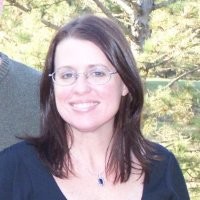One of the biggest challenges for engineering and tech companies today is that young recruits come to the workplace with few practical skills or experiences. “They’ve read a lot of books by academics who’ve never built anything,” said Charlie Camarda an American astronaut and senior advisor to the engineering development group at NASA.
Camarda was in Russia preparing for his first mission in 2003, when the Space Shuttle Columbia blew up. “It was a terrible mistake than happened because the engineers weren’t using critical thinking skills,” he said.
Camarda returned to the U.S. to help figure out what happened, and realized the culture at NASA had gotten so focused on following rules and procedures, people had stopped questioning their processes. So, he decided to develop a training program for young NASA engineers to refocus their approach to problem solving.
The program, called Innovative Conceptual Engineering Design (ICED), was designed to infuse creative-problem solving and innovation into the NASA team environment, by taking problems NASA hadn’t been able to solve, and trying to solve them. The first group of 30 engineers were challenged to figure out how to safely land a landing capsule without injuring its astronauts. “They came up with dozens of ideas,” he said. One of them – use air bags in the capsule – was ultimately incorporated into the Orion space-capsule design.
The ICED program was so successful, Camarda decided to take it to the universities where NASA recruited engineers. Working with professors from MIT and other universities, Camarda helped develop curriculum to teach real-world problem solving techniques to engineers. It included linking students with NASA experts and giving them real world projects to work on. The course later evolved into programming and is now used in colleges and K-12 schools across the U.S. and Finland.
“The idea is to create a collaborative environment where kids are taught how to try new ideas, and to learn from their failures,” he explained. Teaching kids – and adults – how to fail, and that it’s okay to fail, is important because it encourages risk-taking, and challenges individual thinking, he said.
Camarda is now working on NASA’s Epic Challenge program, which connects teams of students and subject-matter-experts to solve “the most epic challenges facing humanity,” via a digital platform where they can work virtually in ‘swarms’ to solve problems and collaborate. He referred to it as a massive open online project or MOOP that will “disrupt the way we teach problem solving.”
Developing programs for students and teachers is becoming increasingly popular among global organizations concerned about the skills gap in young graduates. “The ability to iterate, optimize and problem solve is very important,” said Michael Richey, associate technical fellow at the Boeing Company, in Everett WA. “These skills are generally not taught in school.”
Like NASA, Boeing works with universities to teach engineering skills through real world challenges to young engineers. The skills learned range from how to manage a budget and work with stakeholders, to the benefits of trying lots of ideas quickly to figure out what will work. “There is a lot of fast and furious failure in these courses,” he said.
Investing in these kinds of academic partnerships requires time and money from corporations, but Boeing believes that capacity-building is an important part of maintaining its own future success. “Boeing is an innovative company, and we need a highly innovative workforce,” Richey said. “So, investing in the next generation is part of the ethos here.”
Camarda and Richey said that any big organization concerned about skills gaps in the workforce should consider developing their own educational outreach programs. “Partner with a university, create a program around a real world problem, and see how it goes,” Richey said. “It’s a small investment that can have a big impact.”
Sarah Fister Gale is a writer based in Chicago. To comment, email editor@CLOmedia.com.















